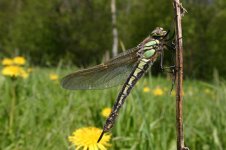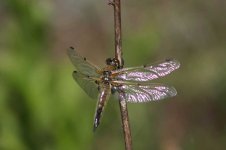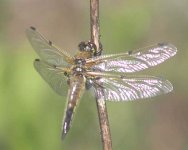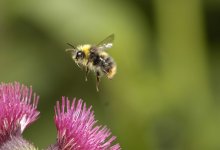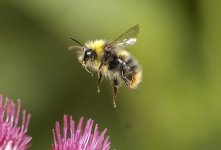imagedude said:
I see many nice photos of insects on flowers etc but not many photos of insects in flight. Short of buying infra red triggers and the like, is it possible to photograph (slow) flying insects using a macro lens and ring flash. I was thinking of donning my running shoes and chasing after some insects with my Canon 300D, 100mm macro lens plus ring flash!
How close will I get to a stationary dragonfly before spooking it? Will a 100mm lens give me enough working distance or should I invest in a 180mm lens?
thanks in advance
Bob
Hello Bob,
Before you splash out on any equipment try obtaining a copy of the book Borne on the Wind, by Stephen Dalton. 1975. ISBN 0 7011 2130 0 The author is a professional photographer who specialises in insects in flight.
Some of his pictures are unbelieveable, however he uses a lot of custom made equipment that is not available on the open market, much of which is described in detail. Special shutters and multiple flash units were necessary. Conventional flash was too slow and he used a flash duration of 1/20,000 second. This was developed for him at a cost of £400.00 (pre 1975 price, about £2500 in todays money) A special shutter was also developed to open and close in 1/500th of a second.
He admits to taking up to 900 pictures of one insect to get the picture he wanted. That's a lotta, lotta film.
An insect, even one flying quite slowly, will move some distance during the time an ordinary camera lens opens and closes, how you will keep it in focus will be problem enough, without the actual movement. I think additional lenses and a ring flash will be the least of your problems.
It will certainly be a lot cheaper taking pictures of insects at rest. Read the book first, then make up your mind as to whether you still want to photograph insects in flight.
Re, approaching Dragonflies, on a cool morning it is possible to even coax a resting dragonfly onto your fingers. The warmer the weather the harder it gets to get near them.
Harry





